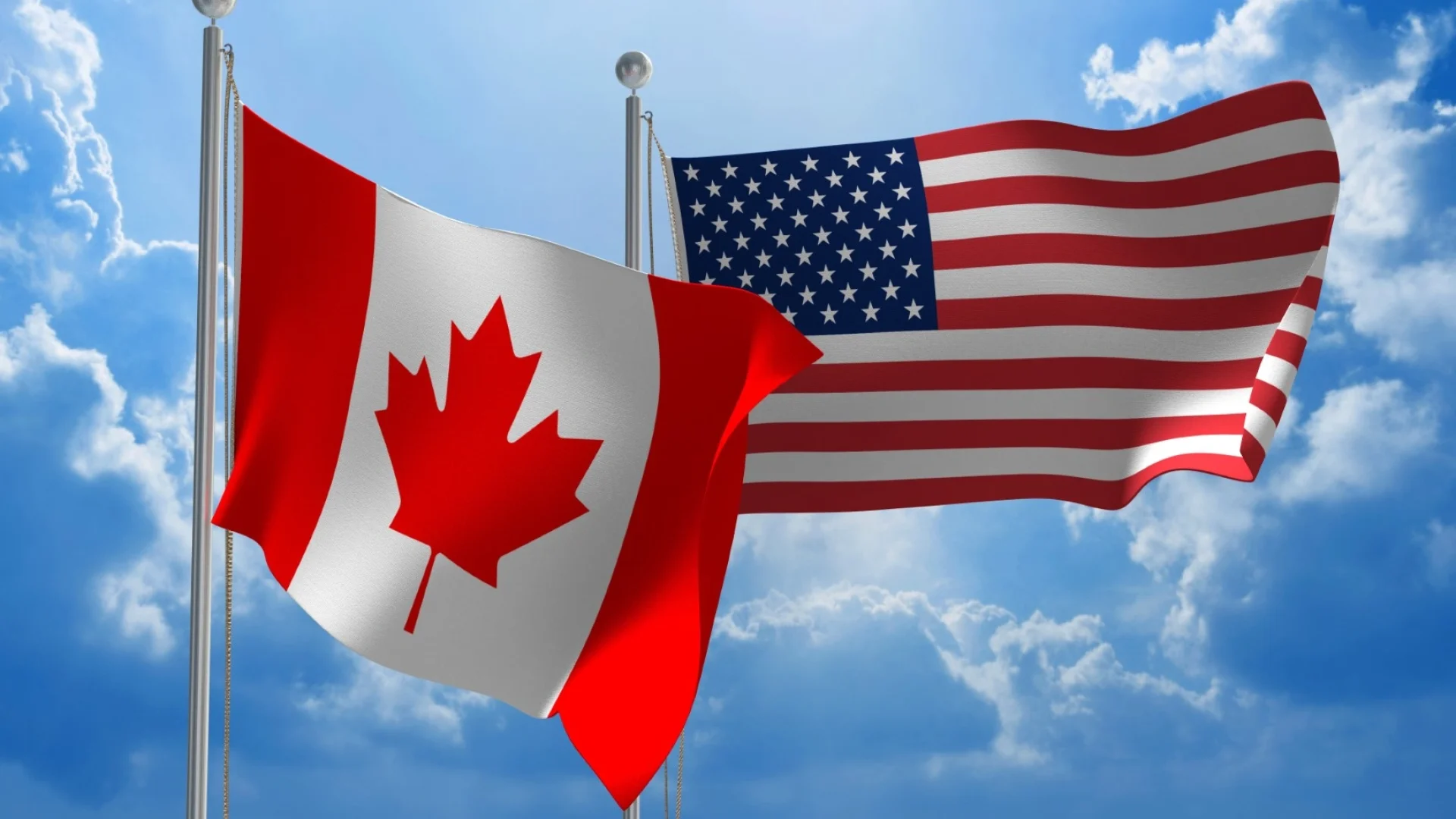Imagine earning a paycheck in one country, only to have both Canada and the US tax it. Sounds like a nightmare, right? That’s where the Canada-US Tax Treaty steps in, a lifesaver for Canadians working in the US, US citizens in Canada facing tax implications, and investors straddling both countries. Signed in 1980 and refreshed in 2007, this agreement ensures avoiding double taxation between Canada and the US with the U.S. tax treaty with Canada on withholding taxes, offering clear answers to how the Canada-US tax treaty works and simplifying cross-border finances thanks to smart tax treaty rates between Canada and the US.
It covers everything from your paycheck to investment earnings, sorting out which country gets to tax what, including earnings from employment, business profits, dividends, interest, royalties, and the sale of assets. In this blog, we’ll unpack its perks and give you clear steps to keep more of your money with SAL Accounting. Ready to untangle your taxes? Let’s get started!
Quick Takeaways
- Sets rules so your income, like salaries, business profits, or investments, isn’t taxed twice.
- Helps you cut or dodge double taxes with smart rules.
- Offers the foreign tax credit to offset taxes paid in one country, plus lower rates on dividends, interest, and royalties.
- Uses residency rules and a tie-breaker test to pinpoint your tax home.
How the Canada-US Tax Treaty Works: Key Rules Explained
The treaty has 31 articles, but we’ll focus on the essentials. These are the rules you need to grasp.
Where You’re Taxed as a Resident
Residency (Article IV) decides which country calls you a “resident” for tax purposes. Canada taxes its residents on worldwide income, while the US does the same for its citizens and green card holders. If both claim you, the treaty uses a tie-breaker test: where your permanent home is, where your strongest ties (like family or main job) lie, and, if unclear, where you spend more time or hold citizenship.
Pro Tip: Keep track of your life’s center, such as home, family, or work, to nail the tie-breaker if needed.
Businesses Across the Border
For businesses, the focus is permanent establishment (Article V). A fixed spot, like an office, factory, or a construction site lasting over 12 months, in the other country lets that country tax profits tied to it (Article VII). With no fixed base, only your home country taxes your earnings.
Think of PE as a footprint: if it’s there, the other country gets a piece; if not, you’re home free.
Pro Tip: Canadian business owners should check if their US activities, like a sales office, count as a PE to avoid surprise taxes. By the way, you can consult with our cross-border tax CPAs anytime you desire.
Investment Income
If you have investments, the treaty cuts taxes on dividends, interest, and royalties (Articles X, XI, XII). US dividends to Canadians drop from 30% withholding to 15%, or 5% if you own 10% of the company. Interest falls to 10% or 0% (e.g., government bonds), and royalties to 10% or 0% for copyrights.
Here’s the breakdown:
| Income Type | Without Treaty | With Treaty | Details |
| Dividends | 30% | 15% or 5% | 15% for regular investments, 5% if you own 10%+ of the company (Article X) |
| Interest | 30% | 10% or 0% | 10% usually, 0% since 2007 in most cases like government bonds (Article XI) |
| Royalties | 30% | 10% or 0% | 10% for patents, 0% for books or art (Article XII) |
| Pensions/Social Security | 30% | Varies (15% for US to Canada) | Taxed where you live; US Social Security to Canadians gets 15% off (Article XVIII) |
This can save you big on cross-border investments.
Working in the Other Country
If you work across the border, Article XV says your income’s taxed where the job happens. However, if you’re a Canadian in the US for less than 183 days in a 12-month period, working for a Canadian employer with no US base, Canada taxes it, not the US. On capital gains, making money from selling property, like real estate, is usually taxed in the country where the property sits, while other gains might be taxed where you live.
Remote work from Canada for a US company stays under Canada’s tax net. For more information, read our post “Canadian Working Remotely for US Company Taxes.”
Pro Tip: Log your US days; staying under 183 with a Canadian boss keeps taxes north of the border.
Special Cases and Exceptions
The treaty has rules for unique situations too.
- Government employees, like diplomats, pay tax only to the country that employs them (Article XIX).
- Students or trainees get exemptions for education or training payments from the other country (Article XX).
- The US savings clause (Article XXIX) taxes its citizens worldwide, but exceptions, like pensions, can ease the load.
Pro Tip: Pensions and social security payments are typically only taxed where the recipient lives, preventing double taxation of these key incomes.
Who Benefits from the Canada-US Tax Treaty and Tax Implications
Here’s who gets a boost from the treaty, including tax implications for US citizens in Canada.
Canadians Working in the US
If you’re a Canadian working in the US, your income’s taxed there, unless you’re under 183 days with a Canadian employer; then Canada takes over. Remote work for a US company from Canada stays taxed in Canada only.
This flexibility is a big win for cross-border workers.
Case Study: Remote Canadian Worker Avoids Unexpected US Tax Bill
The Problem: A marketing gal from Montreal called after getting a scary IRS letter. “I work from home for a New York company, and now the IRS wants taxes even though I’ve never been to the US!” Her employer wrongly treated her as a US contractor instead of a foreign employee. She faced a $9,800 US tax bill plus penalties, despite already paying Canadian taxes on that same money.
What We Did: I told her the treaty had her covered, but we needed to act fast. Since she worked entirely from Canada, Article XV meant no US taxes. We filed a 1040-NR with Form 8833 and wrote her boss explaining proper classification for Canadian remote workers. I always say fixing these mix-ups early prevents bigger headaches. We included proof she lived and worked in Canada.
The Result: The IRS accepted our position—she owed $0 instead of $10,000. “I had nightmares about tax collectors at my door,” she laughed afterward. Her company fixed their system, so now she gets a normal T4 and skips US tax forms completely. She used the money she’d saved for that Vancouver trip she’d been putting off for ages.
US Citizens in Canada
US citizens face tax implications for US citizens in Canada, owing taxes on worldwide income with no exceptions. Living in Canada means you’ll file your Tax Return under unique rules.
Example: Consider the case of Mark Henry, a U.S. resident working from home in Dallas as a software engineer for a Canadian company, spending substantial time in Canada—his income may be taxed there too. He can claim a foreign tax credit in his Form 1040 to offset taxes paid in Canada.
Pro Tip: In Canada’s high-tax system, smart filing matters; run the numbers with SAL Accounting.
Cross-Border Investors
Investors cash in with lower rates. Canadians owning US stocks see dividends drop to 15%, not 30%. US residents holding Canadian bonds might pay 0% interest tax in Canada, leaving just US taxes.
Pro Tip: Hunt for 0% rates on interest or royalties; they’re gold for boosting returns.
Dual Residents and Tie-Breaker in Action
If you have homes in both countries, the treaty’s tie-breaker sorts it out: permanent home, strongest ties, time spent, or citizenship decides your tax residence. You’ll file as a resident in one country, taxing only the other’s sourced income there.
Case Study: Dual Resident Software Engineer Saves $15,000 with Tie-Breaker Test
The Problem: A software guy from Toronto called me freaking out. “Both Canada and the US want to tax all my income!” He split his time between Vancouver and Seattle apartments, with the IRS and CRA both claiming him as a resident. This double-tax mess would cost him an extra $15,000. “I’m trapped between two tax systems,” he said, totally stressed.
What We Did: I jumped straight to using the treaty’s tie-breaker test. I asked simple questions: Where’s most of your stuff? Your dog? Where do you spend holidays? Though his time was split evenly, his personal life centered in Vancouver. We gathered proof of his permanent home and connections, filed Form 8833 with his US return, and prepared his Canadian T1 as primary. I always say good paperwork wins these battles.
The Result: By proving Canada was his real tax home, we blocked double taxation on $120,000 income, saving him $15,000 in US taxes. “I was figuring out which savings to drain,” he told me later. “Now I just file one main return and a simple US form.” He keeps his cross-border lifestyle without the tax nightmare and has sent three friends my way since.
This clarity stops the residency tug-of-war. Contact our cross-border tax accountants for expert help.
How to Avoid Double Taxation Between Canada and the US
Nobody wants to pay twice; here’s how the treaty ensures avoiding double taxation between Canada and the US.
Foreign Tax Credit
If you paid taxes in one country, the foreign tax credit (Article XXIV) keeps your bill single. Here’s how:
- File Form 1116 in the US or T2209 in Canada; foreign tax credits for Canadians in the USA use Form 1116.
- Calculate it: if you paid $2,000 in Canadian taxes, subtract that from your US tax owed.
- Prove it: show the foreign tax hit the same income.
- Time it: late filings can kill your credit.
This trick saves you every time.
Treaty Benefits
Tap lower rates: 15% or 5% on dividends, 10% or 0% on interest and royalties. File Form 8833 (US) to claim treaty perks or W-8BEN (Canada) to cut withholding upfront.
Pro Tip: Submit W-8BEN early; snag those reduced rates from day one.
Residency Tie-Breaker
If you’re a dual resident, Article IV picks one country with these steps:
- Permanent home: where’s your house?
- Strongest ties: where’s your family or job?
- Time spent: where do you live most?
- Citizenship: which passport do you hold?
You’re taxed as a resident there, dodging double residency.
Watch Out for the Savings Clause
For US citizens, the savings clause (Article XXIX) means the IRS taxes your worldwide income anyway. Exceptions, like pensions, can lighten the load. File Form 8833 to claim them.
This keeps US expats in line.
Using Exemptions
The exemption method lets certain income skip tax in one country, like up to $10,000 earned in the US by a Canadian non-resident (Article XV), or student payments from the other country (Article XX). Over $10,000, it’s taxable; under, you’re clear.
Pro Tip: Students should grab those education exemptions; they’re a hidden gem.
Using the Tax Treaty Between Canada and the US to File Your Return
Here’s how to use the tax treaty between Canada and the US to file right, split by country.
Forms and Deadlines for the US
US filers start with Form 1040 if resident, or 1040-NR for non-residents claiming refunds; non-resident tax obligations under the tax treaty need 1040-NR. Credits use Form 1116. Treaty rates require Form 8833 or W-8BEN to lower withholding.
Deadlines
- April 15: file and pay (or face interest).
- June 15: expats get an auto extension.
- April 15: FBAR (FinCEN Form 114) if accounts hit $10,000, extendable to October 15.
Pitfalls: Miss FBAR, pay $10,000. Convert CAD to USD with the IRS annual average rate; spot rates mess you up. Consult our US tax accountants to avoid any mistakes.
Forms and Deadlines for Canada
Canadians file the T1 for worldwide income. Credits go on T2209. Assets over $100,000 CAD need T1135 or risk fines.
Deadlines
- April 30: most filers.
- June 15: self-employed, taxes due April 30.
Pitfalls: Use the Bank of Canada’s annual average rate for USD to CAD; guessing hurts. Missing T1135 stings with penalties.
Why the Tax Treaty Rates Between Canada and the US Shine
The treaty’s a goldmine with fair tax treaty rates between Canada and the US. Here’s why it rocks.
Lower Tax Rates
It slashes rates, huge for investors. Without it, US payments to Canadians face 30% withholding; with it, you get:
- Dividends: 15%, or 5% if you own 10%; the tax treaty rate between Canada and the US saves big.
- Interest: 10% or 0% (e.g., government bonds).
- Royalties: 10% or 0% (e.g., copyrights).
- Savings: $10,000 in dividends? Save $1,500 at 15% vs. 30%.
That’s cash back every time.
Double Taxation Relief
It keeps your income taxed once, not twice. No double-tax headaches here.
Clear Residency Rules
The tie-breaker test picks your tax home: permanent home, ties, time, or citizenship. Dual residents dodge the chaos.
Boosting Cross-Border Business
It helps business flow, making trade and investing easier, like buying US stocks without a 30% hit. That’s why deals thrive between these neighbors.
Pro Tip: Plan with treaty rates; 0% interest boosts returns fast.
Final Thoughts
The Canada-US Tax Treaty simplifies cross-border taxes with the U.S. tax treaty with Canada on withholding taxes, cuts your burden, and ensures avoiding double taxation between Canada and the US with fair tax treaty rates between Canada and the US, answering how does the Canada-US tax treaty work, easing tax implications for US citizens in Canada, and delivering cross-border tax treaty benefits. It’s a win for workers, residents, and investors alike; SAL Accounting’s got your back.
Connect SAL Accounting today to master global taxes. Contact us now to sharpen your tax strategy and lead the cross-border game.
Common Questions Answered
It assigns tax rights, like work income to where it’s earned, and offers credits.
Dividends: 15% (or 5% with 10% ownership), interest: 10% or 0%, royalties: 10% or 0%; better than 30%.
Use Form 8833 (US) for benefits, Form 1116 (US) or T2209 (Canada) for credits, W-8BEN (Canada) for rates.
No, if in Canada, only Canada taxes it; file 1040-NR if US taxes hit.
Offers credits or exclusions to ease double taxation.
A fixed spot, like an office, lets the other country tax profits; no PE, home country only.
Yes, Canadian non-residents earning up to $10,000 in the US dodge tax; over that, it’s taxable.
You might double-pay or face penalties, like $10,000 for missing FBAR. Fix it with 1040-NR or ask our international tax accountants to handle it for you.






